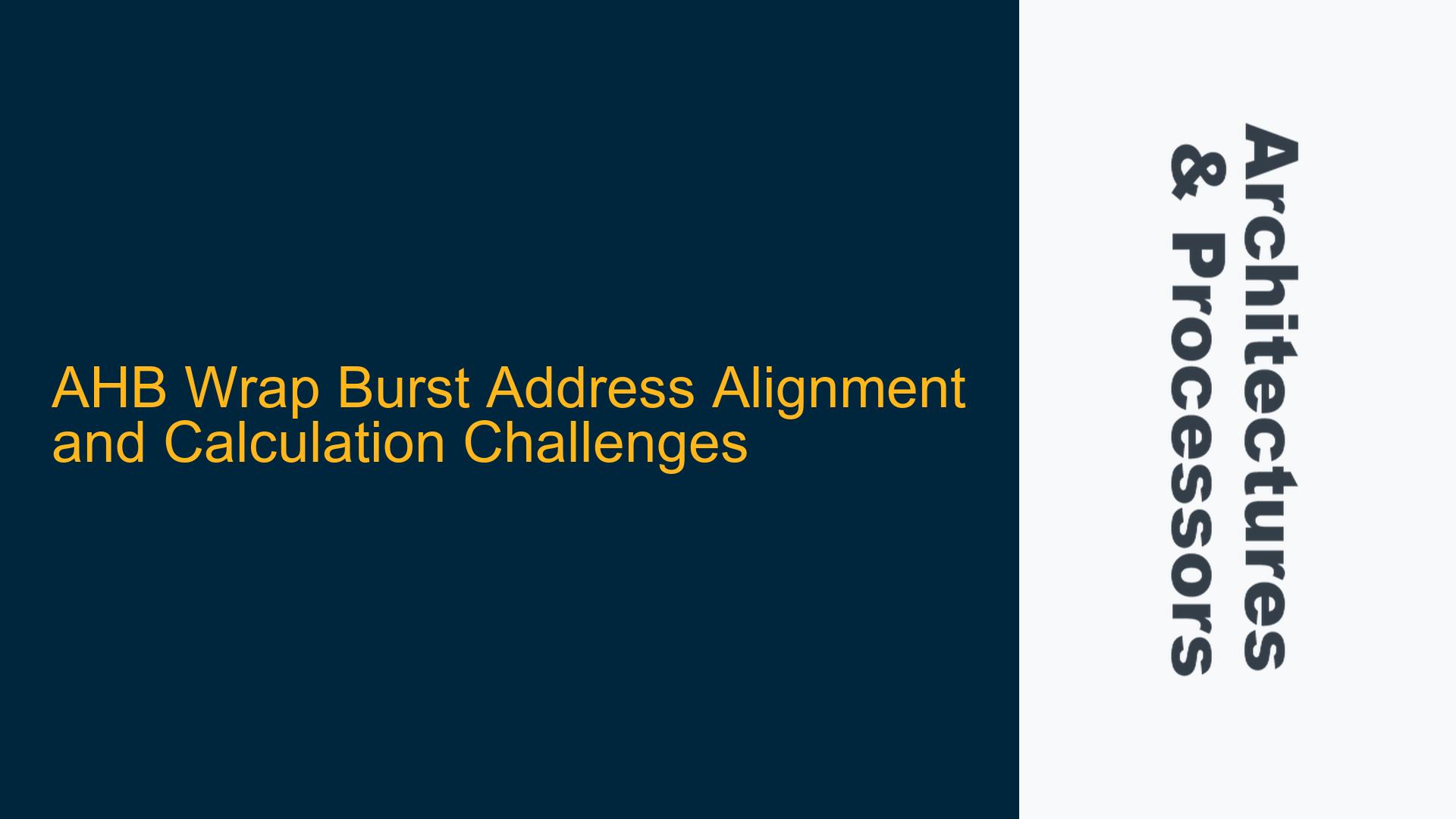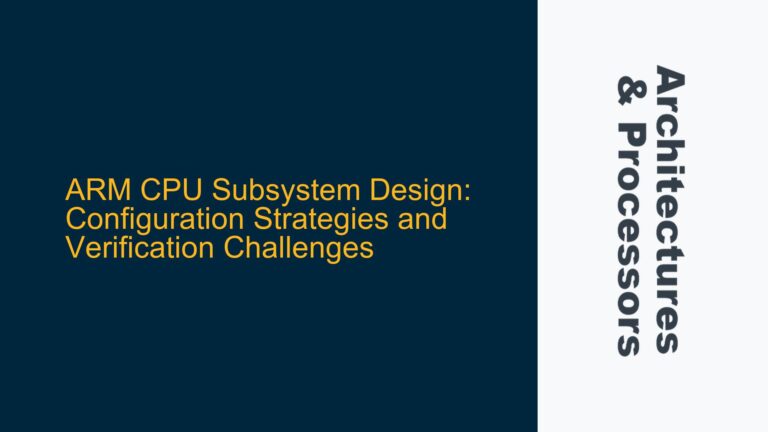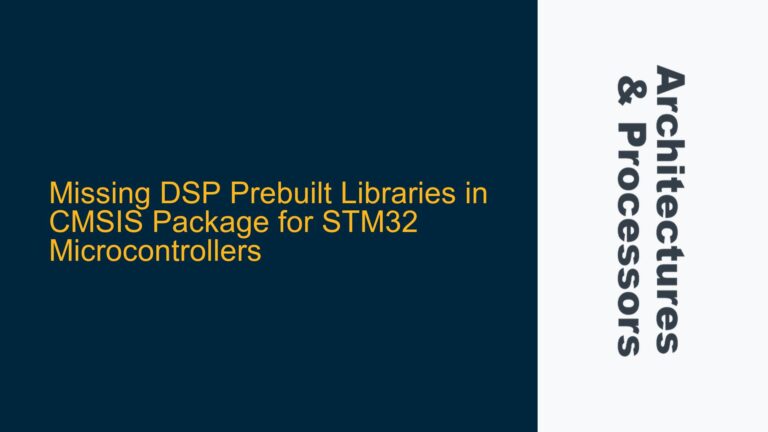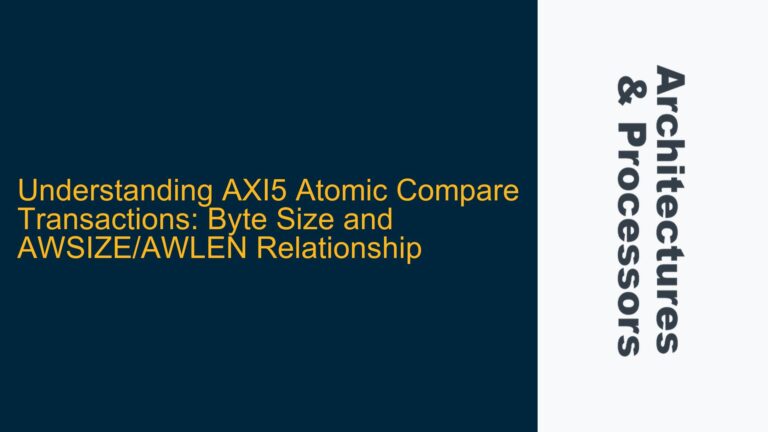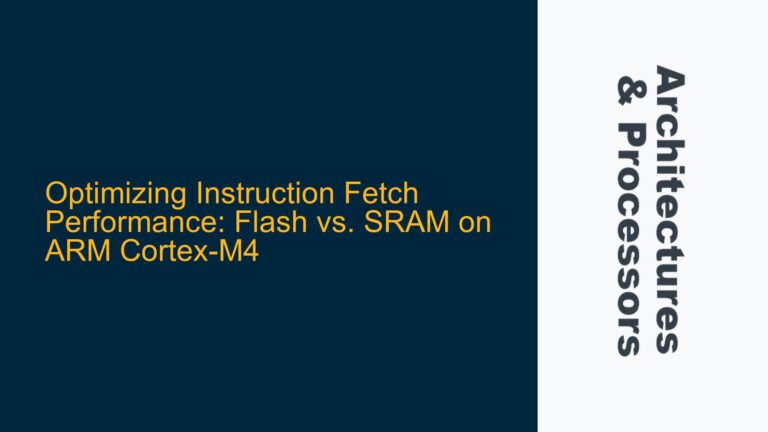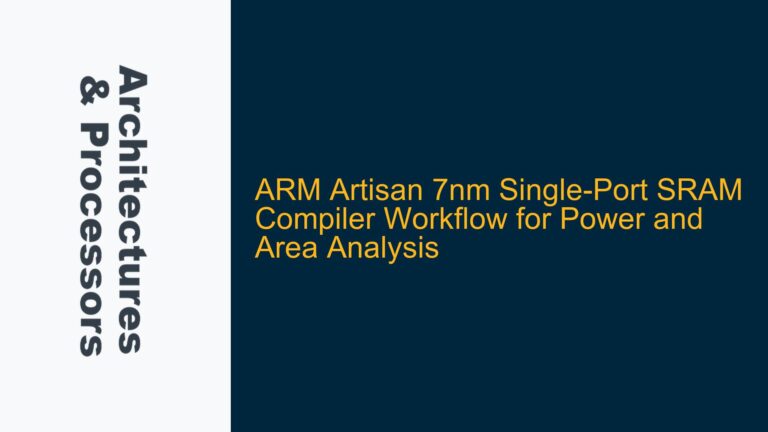AHB Wrap Burst Addressing with HSIZE=2 and WRAP8 Starting at 0x4
The Advanced High-performance Bus (AHB) protocol is a critical component in ARM-based SoC designs, enabling efficient data transfers between masters and slaves. One of the more complex aspects of AHB is understanding how address alignment works during wrap bursts, particularly when dealing with specific transfer sizes and starting addresses. In this scenario, we are examining a case where the transfer size (HSIZE) is set to 2 (indicating 32-bit transfers) and the burst type is WRAP8, starting at address 0x4. The primary challenge lies in calculating the correct address sequence and ensuring alignment with the AHB protocol’s requirements.
When HSIZE=2, each transfer involves 4 bytes of data, and the address increments by 4 bytes for each beat in the burst. A WRAP8 burst consists of 8 beats, meaning the total data transferred is 32 bytes (8 beats * 4 bytes per beat). The wrap boundary for such a burst is determined by the total data transferred, which in this case is 32 bytes (0x20 in hexadecimal). This means the burst will wrap around at multiples of 0x20.
Starting at address 0x4, the sequence of addresses accessed during the WRAP8 burst would be: 0x4, 0x8, 0xC, 0x10, 0x14, 0x18, 0x1C, and finally wrapping back to 0x0. This sequence ensures that the burst remains within the 32-byte boundary and adheres to the AHB protocol’s alignment rules. The HTRANS signal for each of these addresses remains SEQ (sequential), indicating that each access is part of a continuous burst sequence.
However, the alignment scenario becomes more complex when considering different starting addresses and ensuring that the wrap boundary is correctly calculated. For example, if the starting address were 0x10, the sequence would be: 0x10, 0x14, 0x18, 0x1C, 0x0, 0x4, 0x8, 0xC. Similarly, starting at 0x34, the sequence would be: 0x34, 0x38, 0x3C, 0x20, 0x24, 0x28, 0x2C, 0x30. In each case, the burst wraps around at the 32-byte boundary, ensuring that the address sequence remains aligned with the protocol’s requirements.
Misalignment Risks Due to Incorrect Wrap Boundary Calculation
One of the primary risks in AHB wrap burst addressing is the potential for misalignment due to incorrect wrap boundary calculation. This can occur if the wrap boundary is not correctly identified or if the starting address does not align with the expected boundary. For example, if the wrap boundary is incorrectly calculated as 0x10 instead of 0x20, the address sequence would not wrap correctly, leading to potential data corruption or protocol violations.
Another common cause of misalignment is the misunderstanding of how the wrap boundary is determined. The wrap boundary is not simply the starting address plus the total data transferred; rather, it is the next multiple of the total data transferred from the starting address. For example, if the starting address is 0x4 and the total data transferred is 32 bytes (0x20), the wrap boundary is 0x20, not 0x24. This distinction is crucial for ensuring that the address sequence wraps correctly and remains aligned with the protocol’s requirements.
Additionally, the alignment of the starting address itself can impact the correctness of the wrap burst. If the starting address is not aligned with the transfer size (e.g., starting at 0x5 for a 32-bit transfer), the burst may not proceed as expected, leading to potential protocol violations or data misalignment. This is why it is essential to ensure that the starting address is correctly aligned with the transfer size before initiating a wrap burst.
Implementing Correct AHB Wrap Burst Address Calculation and Alignment
To ensure correct AHB wrap burst address calculation and alignment, it is essential to follow a systematic approach that includes both pre-burst checks and during-burst monitoring. The first step is to verify that the starting address is correctly aligned with the transfer size. For a 32-bit transfer (HSIZE=2), the starting address must be aligned to a 4-byte boundary (i.e., the lower 2 bits of the address must be 0). If the starting address is not aligned, the burst should not be initiated, and an error should be signaled.
Once the starting address is confirmed to be aligned, the next step is to calculate the wrap boundary correctly. As previously discussed, the wrap boundary is determined by the total data transferred in the burst, which for an 8-beat 32-bit burst is 32 bytes (0x20). The wrap boundary is the next multiple of 0x20 from the starting address. For example, if the starting address is 0x4, the wrap boundary is 0x20; if the starting address is 0x10, the wrap boundary is also 0x20; and if the starting address is 0x34, the wrap boundary is 0x40.
During the burst, it is crucial to monitor the address sequence to ensure that it wraps correctly at the calculated boundary. This can be achieved by implementing a state machine that tracks the current address and compares it to the wrap boundary. When the address reaches the wrap boundary, the state machine should reset the address to the starting address of the burst, ensuring that the sequence wraps correctly.
In addition to monitoring the address sequence, it is also important to verify that the HTRANS signal remains SEQ for each beat in the burst. This indicates that each access is part of a continuous burst sequence and helps to ensure that the burst proceeds as expected. If the HTRANS signal changes to NONSEQ during the burst, it may indicate a protocol violation or an error in the burst sequence.
Finally, it is essential to implement robust error handling mechanisms to detect and respond to any alignment or protocol violations that may occur during the burst. This can include signaling an error to the master, aborting the burst, or taking other corrective actions as necessary. By following these steps, designers can ensure that AHB wrap bursts are correctly calculated and aligned, minimizing the risk of data corruption or protocol violations.
Conclusion
Address alignment in AHB wrap bursts is a critical aspect of ARM-based SoC design, requiring a deep understanding of the protocol’s requirements and careful implementation to ensure correct operation. By systematically verifying the starting address, calculating the wrap boundary correctly, monitoring the address sequence during the burst, and implementing robust error handling mechanisms, designers can ensure that AHB wrap bursts proceed as expected and remain aligned with the protocol’s requirements. This not only helps to prevent data corruption and protocol violations but also contributes to the overall reliability and performance of the SoC.
